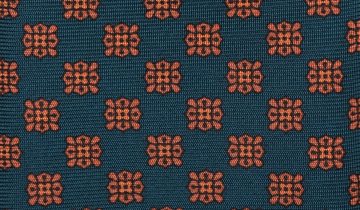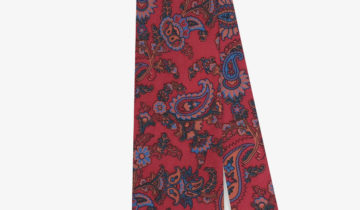
A world ever Madder
A world ever Madder


It is supposed to have been the earliest form of lipstick, discovered by chance when early Africans were enjoying the root. Also it graced the flags of the Persian Empire and of France, amongst a myriad of other uses. A curiosity of Madder is its association with Paisley – as it is known in the English speaking world. In Italy and other countries, the Paisley pattern is known as cashmere – and this is probably more factually correct. Paisley, a town in Scotland with a rich heritage of silk printing, particularly as the British Empire grew, had developed imitations of the beautifully designed Kashmiri shawls that had come back to Britain via the Empire and associated companies.
Thus, through the expansion of Empire and English language trade (in North America, especially), the name of the town where it was later printed overtook the origin of the design in Kashmir (thence cashmere). The roots of the pattern go back far deeper to Indian and Persian culture; with the origin of the pattern mooted to come from pressing the side of a closed fist into the dye and then imprinting it on silk, chiefly, as well as other cloths. Certain regions and cities tended to find their own specialties, with Macclesfield becoming (and remaining until this day) extremely gifted in the production of neat prints (Macclesfield Neats) and Kent becoming particular champions of Pines, the small, neat and often evenly spaced curvy pattern that somewhat mimics what many would see as the heart of a Paisley design.


For Madder, heavier weight, ordinarily 36oz or heavier, is required to ensure that the silk endures the full process of production. One of the most fascinating aspects of screen printing is that the colours settle quite some time after printing is completed – so there is usually a variance from the expected finish. This for some true aficionados can result in multiple variations of the same colour-way, with some nutty shades leaning heavily towards shades of orange, and the classic red veering sometimes towards a deep rose or alternate shades of intense red – and browns that lead to maroon, wines that range from Bordeaux to Burgundy, lighter clarets to deeper maroons.
It is, in any case, fascinating. Much modern Madder is now digitally printed, combining the chemicals, acids and dyes necessary to create the Madder colours and classic, chalk-hand feel, with a more predictable and consistent finish. The turnaround of this is obviously faster and more affordable – with some irony, some of the pressures that befell hand-printing are now bearing down upon screen printing. Digital also
leads to far less waste and can also be produced and reproduced in lesser quantities, allowing for some very exclusive runs to be completed. The precision afforded and advances in technology means that the quality is still of an exceptional and market-leading quality for printed silk.





 No products in the cart.
No products in the cart.